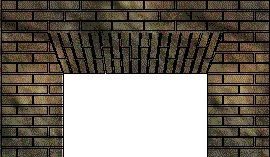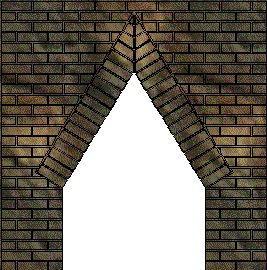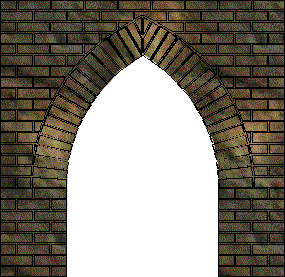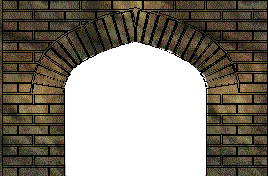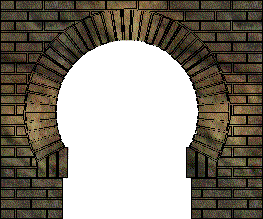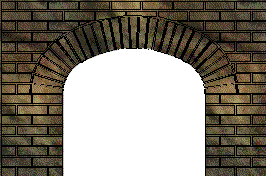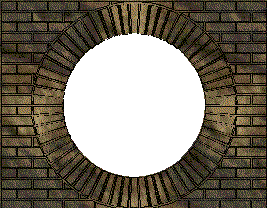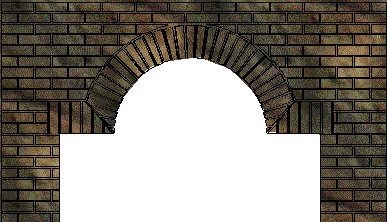|
|
|
| If you put a hole in a masonry wall and step
on the top of it, you're apt to find yourself on the ground below pretty
fast. However, if you distort the individual stone shapes to where they're
larger at the top than at the bottom, they'll hold you up because they'll
act like the stopper in a bottle.. If you Google arch types, you'll find a more sophisticated definition, but that's how it works. These stones are known as voussoirs, and the one in the middle is the key or keystone, which now makes sense to me. It's also called the capstone. For an explanation of how and why an arch works, read this site. |
|
| The abutments of an arch are located at either side of it, and the span is measured horizontally from abutment to abutment. Its vertical measurement is called the rise. |
Jack or Flat |
Round or Roman |
This arch is made up of an odd number of voussoirs. Found in styles such as Italianate, Italian Renaissance, Romanesque, Richardsonian, Spanish Eclectic, and Spanish Colonial. The curved top is called the extrados, while the lower curve is known as the intrados. If the lower line of an arch is a surface, it's called a soffit. |
| The rise of an arch is measured from the highest point of
the arch to where it starts While the Roman arch forms a semicircle, this arch has a partial curve. Found in Italianate and Colonial styles.
|
Segmental |
Triangular
|
What happens when you take a triangular arch and a rounded
arch and put the shapes together?
Look at the Gothic arch below. |
| Also known as a drop, equilateral or lancet arch, depending on if the spacings of the centers are
respectively less than, equal to, or more than the clear span,
which is the horizontal clear dimension between abutments (The
masonry or combination of masonry and other structural members which
support one end of the arch at the skewback,) The surface on
which the arch joins the supporting abutment is the skewback. Whew. These are almost always found in the Gothic Revival style. |
Pointed or Gothic or Ogive |
Tudor |
If you distort a Gothic arch, you get the Tudor, found in Gothic Revival and Tudor Revival styles. |
| Found in the Moorish Revival style. Mostly seen in commercial buildings and used primarily for decoration. |
Moorish or Horseshoe |
| Arches frame and
support doors, windows, porches, and other wall openings including
fireplaces. You can see how strong they are because those built hundreds
of years ago still stand.
Arches can intersect, leading to spectacular design possibilities through the ages. |
|
Multicentered |
Also known as basket or basket handle. The center is not a circle, but rather fashioned from a number of arcs. Its width is much greater than its height. |
| Decorative. Often used in the Orient. |
Bull's-eye or Circular |
Venetian or Queen Anne |
An arch used over the triple opening of the so-called
Venetian or Palladian window, flat over the narrow side lights, round over
the larger central opening. However, when the Venetian arch is known as an ogee or keel arch, it is formed from two S-shaped forms on either side. |
| A blind arch is one in which the opening is filled with masonry. | For more arch shapes, check out this site. |
VaultPut two arches together, and the structure is even stronger. |
|

